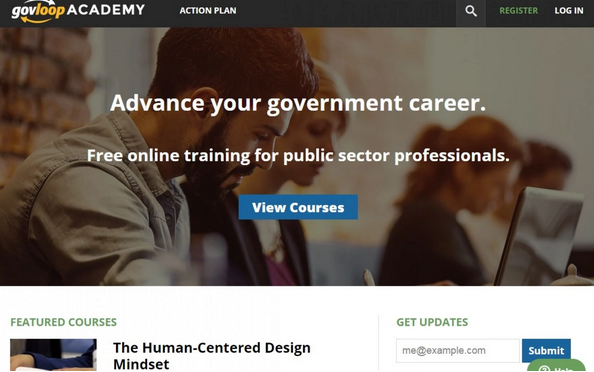Khan Academy is changing how kids (and even adults!) are learning across the globe. With over 2,400 courses from arithmetic to physics and 100,000+ exercises, millions of people across the globe are learning from the world’s top experts at Khan.
At the same time as this revolutionary change is taking place, it’s worth looking at how government learns – specifically, government employees. There are over 20 million government employees in the U.S. working on issues that range from keeping our country safe to improving our nation’s infrastructure in roles from budget to technology to customer service. If they do their jobs well, we save billions of dollars and improve millions of lives.
But how do we ensure they learn how to do their jobs well? Currently, here is the plan: cut training budgets, eliminate all travel for training, and, while we’re at it, have three people doing a job where there used to be five.
But it doesn’t have to be that way. We can leverage the same innovative approach to learning used by Khan Academy in order to help our government employees do their jobs better.
That’s why we launched GovLoop Academy last week: to provide free, short, impactful learning experiences for public sector professionals. We launched with over 25 courses, online mentoring, digital individual development plans, and badging.
As we did the research to develop GovLoop Academy, interviewing and surveying hundreds of government employees, five major themes emerged that can dramatically improve the government workforce through online learning:
1) Short: Everyone is busy. As we met with government employees, nearly all of them mentioned they had limited time. But they had 5 minutes here and 10 minutes there. Learning has to be split into micro-learning experiences and that’s why all of our videos are in the 3-5 minute range in a course.
2) Practical: Learning has to be useful right away. We found government employees did not want just “theory” on topics like project management. They wanted tactical tips that they could use today in their specific environment. In addition, they wanted hands-on exercises and team-based projects on practical work issues.
3) Social: The great thing about government is all employees are on the same team. If I’m at EPA and you are at CDC, we want to learn from each other. Our research showed that government employees wanted to learn from people currently in government like them. They also wanted the experience to be social and for there to be discussions with others in government at their training.
4) Recordable: Many government employees move agencies across their career and it’s tough to keep track of what courses they’ve taken and what they’ve learned. That’s why we’ve made it easy to capture all of an individual’s learning experiences across time, tracking courses taken not only on GovLoop Academy, but also recording any informal learning that’s completed both online and in-person.
5) Timely: A lot of the classic government topics like mandatory ethics or security training exist in droves. However, a number of folks said they lacked training on timely topics. For example, they mentioned open data and human-centered design as two cutting-edge topics that were making the transition from a small group of early innovators to mainstream adoption. People needed relevant training on an emerging field where there’s little if any current training content.
It’s still early in the reinvention of online learning, whether it’s the great work at Khan Academy or Skillshare or Udacity. We believe the time is ripe for this innovation to start coming to government. With a retiring workforce, shrinking budgets, and decreasing time, we need to find ways to train current and rising leaders to take on the important tasks ahead.
